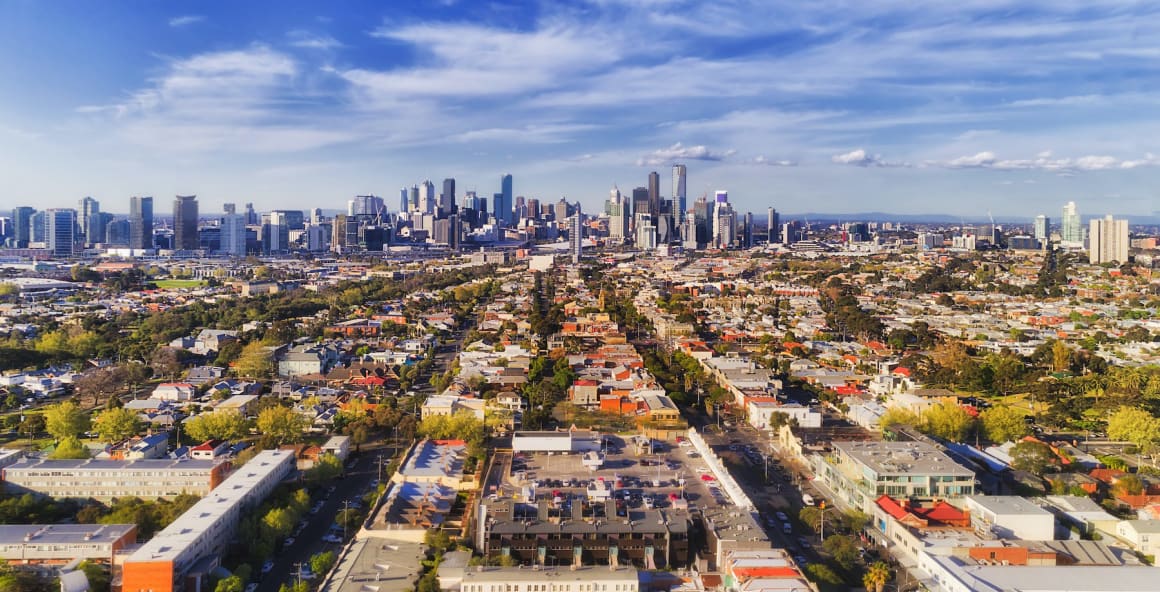Nothing wrong with buying property away from the CBD: Hotspotting's Terry Ryder

EXPERT OBSERVER
It’s long overdue for real estate consumers to let go of the notion that proximity to the CBD matters.
Long before the pandemic and its impact on the Central Business Districts of our major cities, the relevance of the CBD in choosing where to live or invest was diminishing year by year.
The fallacy persists that most people work in the CBD. The reality is that, in all our capital cities, the vast majority work in suburban employment nodes.
There are, for example, over 2.1 million people employed in the Greater Melbourne area, but only about 20% work in the City of Melbourne (the CBD and near-city suburbs).
For most people, when it comes to choosing a place to live, the CBD is irrelevant.
They don’t work there, they don’t shop there and their kids don’t go to school there.
The average person has little reason to ever visit a CBD, although they may occasionally go to a CBD for entertainment or leisure.
But I still have people regularly raising, as an objection to a particular location, that it’s a long way from the CBD.
Like many myths in real estate, this one just refuses to die.
In Sydney, the suburbs closest to the CBD are greatly under-valued, with median house prices well under $2 million (which is miserable by Sydney standards), like Redfern ($1.45 million), Newtown ($1.42 million), Glebe ($1.7 million) and Camperdown ($1.6 million).
The most prestigious suburbs, the ones with median prices above $3 million, are in many cases a long way from the tall office buildings – suburbs like Cremorne, Killara, Lindfield and Manly.
The Sydney locations with the best long-term capital growth rates, those where price growth has averaged more than 8% per year over the past decade, include many which a great distance from the Sydney CBD.
They include humble suburbs a long, long way from the City, like …
- St Marys out at Penrith,
- Minto and Macquarie Fields in the far south-west,
- Parramatta and North Parramatta,
- Marsden Park out near Blacktown,
- Middleton Grange in the precinct around Liverpool,
- Smithfield in the Cumberland LGA,
- Canley Vale in the Fairfield LGA,
- Kogarah in the Georges River LGA
They also include Northern Beaches suburbs like Seaforth, Avalon Beach and Dee Why, as well as north-of-the-harbour locales like Cremorne, Lindfield, North Willoughby and West Ryde.
In Melbourne, if you want to find superior capital growth over time, you need to head a long way from the City centre, in most cases.
The greatest concentration of suburbs with long-term growth averages above 7% per year in the Greater Melbourne area is the Mornington Peninsula, where Bittern, Mt Martha, Tootgarook and Sorrento all have outstanding growth records.
The distance between Sorrento and the Melbourne CBD is over 100km, around an hour and a half by car. The median house price for Sorrento has risen almost 30% in the past 12 months. Nearby Tootgarook is a lot less expensive, despite a 20% rise in the median price in the past year.
Only slightly closer to the tall buildings is the new development suburb of Clyde North in the City of Casey, with a long-term growth rate close to 9% per year.
The suburb of Williams Landing down in Wyndham City in the far south-west also has a long-term growth rate above 8% per year – as does the suburb of Mickleham in the City of Hume in the far north of the Melbourne metro area.
Middle-ring areas with great growth rates include Box Hill, Brunswick East and Derrimut.
All those places out-perform Toorak, Elwood, Elsternwick, Glen Iris, Kew and Malvern on capital growth rates.
Upmarket near-city locations which have outstanding growth rates – these are the exceptions rather than the norms – include Hawthorn, South Yarra and South Melbourne.
The key message is that the elements that drive values higher, because they attract buyers in large numbers, include affordability, infrastructure and lifestyle. Proximity to the CBD doesn’t feature prominently.
So, if you’re a home buyer or investor with a budget that forces you to buy in middle or outer ring areas, don’t worry about it. There are way bigger things it’s good to be close to, other than the CBD.


